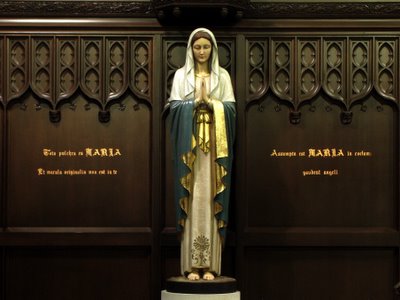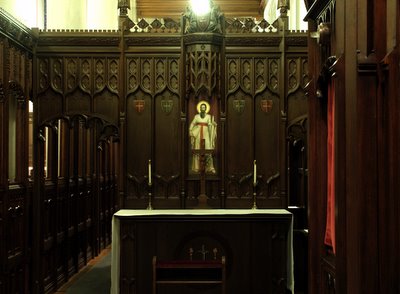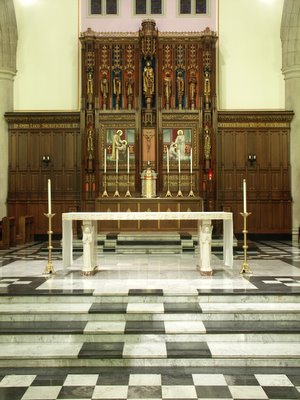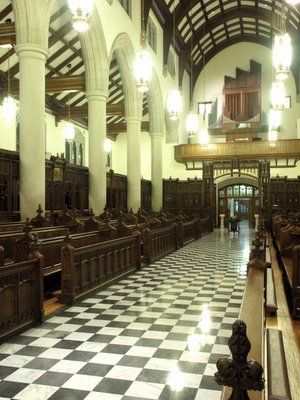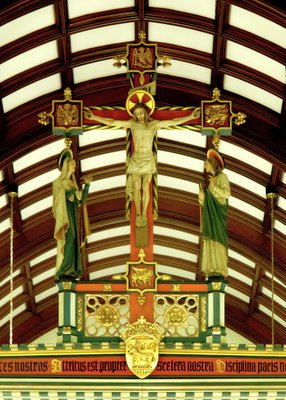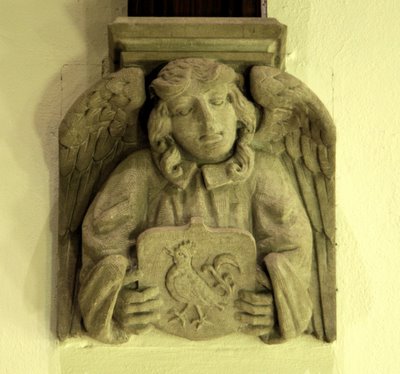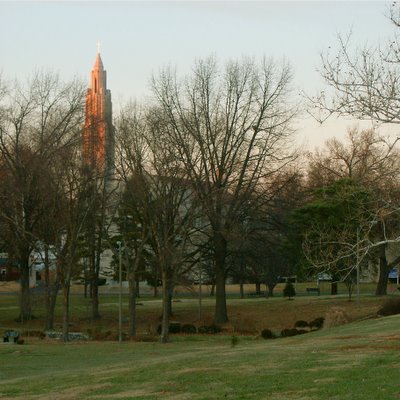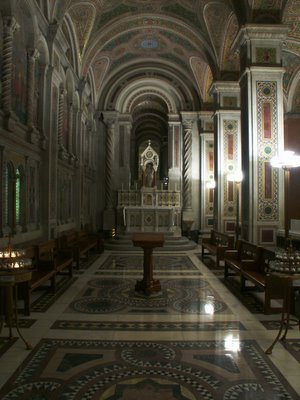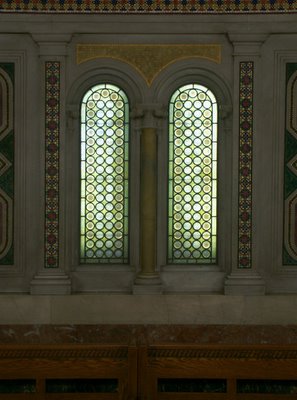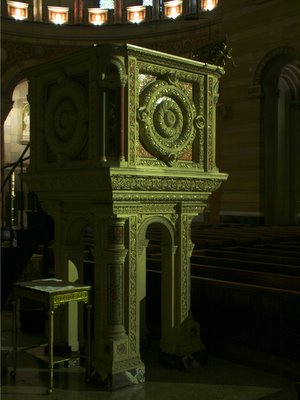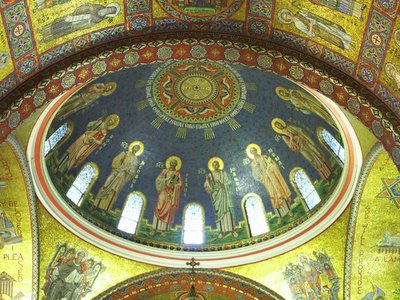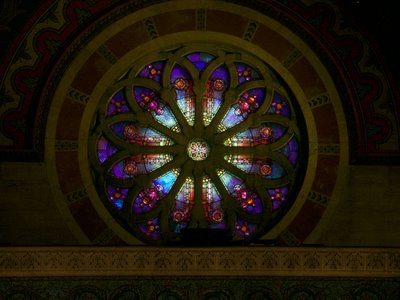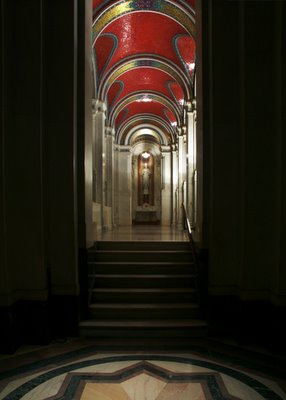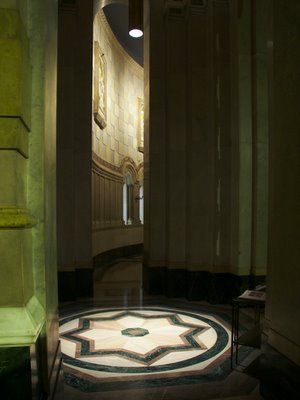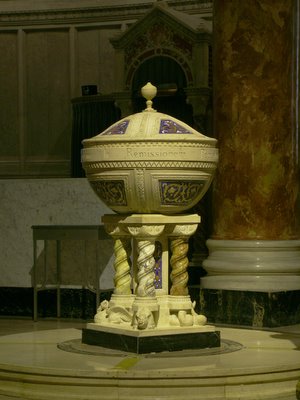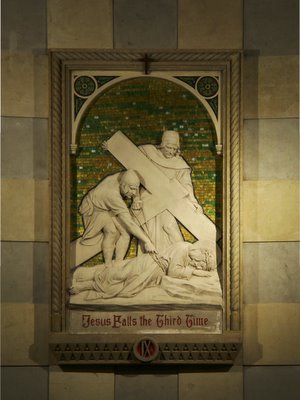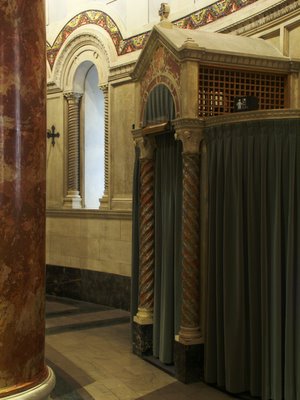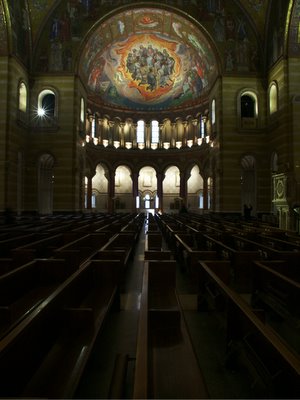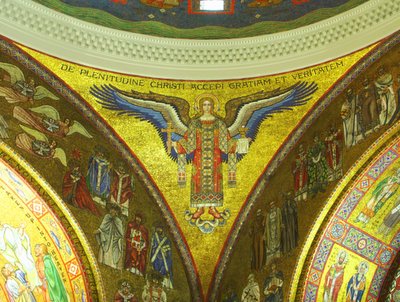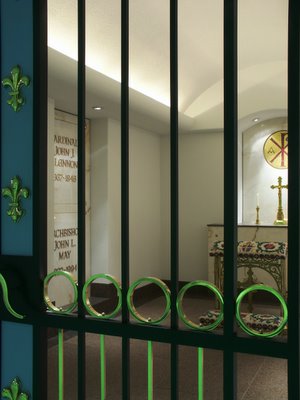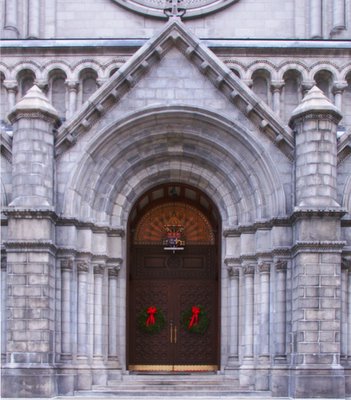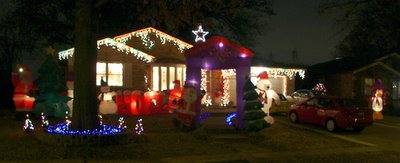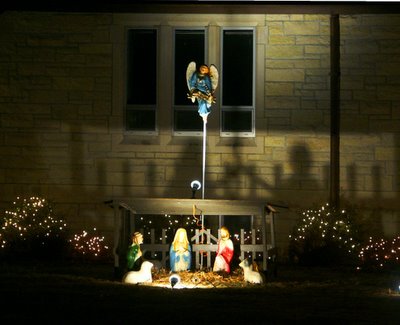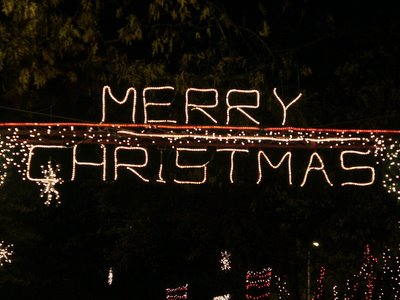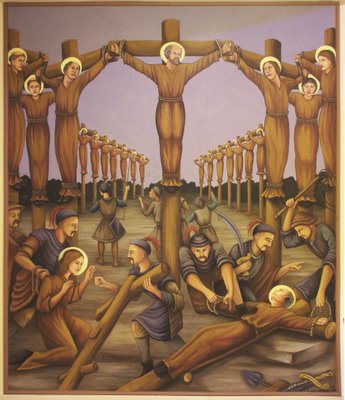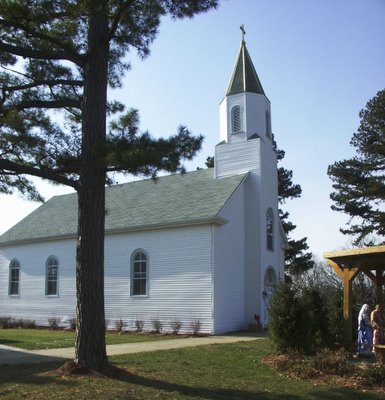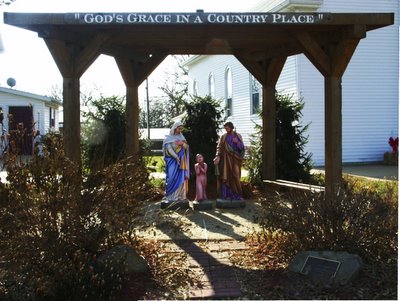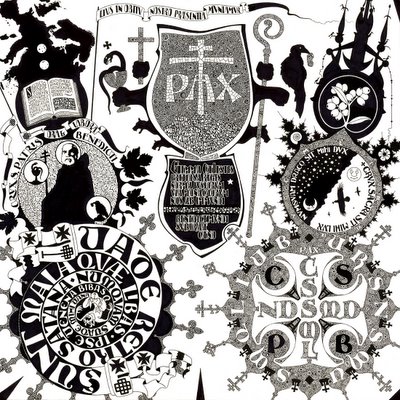
Click on image for a larger version.
Saint Benedict. 11 inches square. Ink on paper. Inspired by, among other things, the Saint Benedict Medal and a painting of the saint by Andrea Mantegna. Contrast increased in Photoshop to compensate for the dulling effect of the scanner.
All works copyright 2005 Daniel Mitsui
dpjm[at]alum[dot]dartmouth[dot]org or danmitsui[at]hotmail[dot]com
Source: http://www.danielmitsui.com/
I recently posted an article about Catholic freelance illustrator Daniel Mitusi. I noticed that he allows others to use his illustrations on websites, so I thought I would include one here.
Daniel must be commended for reviving and making anew Catholic illustration, which has been limited for decades in the simple style of illustration as seen in the one-volume version of "Christian Prayer" and in the clipart reprinted in uncountable parish bulletins. The Traditonal Latin Mass communities I've attended have typically used reproductions of ancient woodcuts in their bulletins, but here is a contemporary alternative with the spirit of the past.
Daniel's illustrations—as far as I know—are the most geometically complex drawings of the past century or more, with the possible exception of engineering documents, and only the psychedelic posters of the late 1960s even come close to this complexity. Complexity used to be common in illustration, but the Modern style abstracted design to only a few, spare lines.
His artwork contains fractal imagery; fractals being complex geometrical entities which are difficult to describe using Euclid's geometry, but are common in nature. Fractals have a form that is repeated in many scales, so that larger parts of whole are reflected in the smaller parts, like large ocean waves having smaller waves superimposed on them, or the coastline of an island, which has ever smaller detail, like gulfs, bays, inlets, coves, and even smaller indentations that multiply exponentially as you look closer. The Classical Orders of Western architecture has a fractal nature, where larger objects are subdivided into smaller ones, at many scales simultaneously. See the article The Fractal Nature of the Architectural Orders by Daniele Capo, who argues that the Modern and Postmodern reduction of the Classical Orders to just a spare collection of large geometric elements was a rejection of the spirit of the ancients, and that similarities between larger and elements and smaller ones is an integral part of the tradition. The complexity of Daniel Mitsui's illustrations are a reflection of nature, and include much symbolism.
His art also does not shy away from difficult, unatractive subjects, as his illustrations of Saint Bartholomew and the Decollation of Saint John the Baptist show. There has been a recent deemphasis on the martyrs and their sacrifices, so these illustrations are a reminder that our forebearers did not live pleasant lives.








